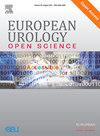在机器人泌尿外科中利用先进的成像技术需要专门和结构化的培训
IF 4.5
3区 医学
Q1 UROLOGY & NEPHROLOGY
引用次数: 0
摘要
近年来,外科先进技术的整合已经改变了医疗保健,泌尿外科一直是这些创新的先驱。与结构化的药物开发过程不同,外科技术的进步遵循独特的途径,例如创新、开发、探索、评估和长期随访(IDEAL)框架,该框架支持安全、循证创新。包括三维(3D)模型和增强现实(AR)在内的互补技术已经成为机器人泌尿外科手术的变革性工具,特别是在复杂病例中。这些技术提高了手术计划、术中导航和术后效果,特别是在肾癌和前列腺癌手术中。尽管采用越来越多,但针对3D和AR应用的结构化培训计划仍然不发达。为了解决这一差距,我们对第十二届技术泌尿学会议(2024)的参与者进行了一项在线调查,以评估这些技术的当前使用和培训需求。在126名受访者中,大多数人在临床实践中使用3D模型(64.5%)和AR(40.3%),突出了它们在机器人部分肾切除术和根治性前列腺切除术中的作用。绝大多数受访者强调需要专门的多学科课程,包括实践培训和基于熟练程度的进步方法。本研究强调了结构化、技术特异性培训的必要性,以最大限度地发挥3D模型和AR在机器人泌尿外科中的潜力,为推进外科教育和改善患者护理结果提供关键见解。本研究强调了三维模型和增强现实等先进技术在泌尿外科手术中的日益融合,并强调了对适当培训的日益增长的需求,以最大限度地发挥其潜力。虽然证明它们对手术精度和结果的直接影响需要不同的研究设计,但该分析主要强调了建立全面培训计划的必要性,以确保对患者进行更安全、更有效的护理。本文章由计算机程序翻译,如有差异,请以英文原文为准。
Harnessing Advanced Imaging Technologies in Robotic Urological Surgery Requires Specialized and Structured Training
In recent years, the integration of advanced technologies in surgery has transformed health care, with urology consistently pioneering these innovations. Unlike the structured drug development process, surgical advancements follow a distinct pathway, exemplified by the Innovation, Development, Exploration, Assessment, and Long-term follow-up (IDEAL) framework, which supports safe, evidence-based innovation. Complementary technologies, including three-dimensional (3D) models and augmented reality (AR), have emerged as transformative tools in robotic urological surgery, particularly for complex cases. These technologies enhance surgical planning, intraoperative navigation, and postoperative outcomes, especially in kidney and prostate cancer surgeries. Despite growing adoption, structured training programs tailored to 3D and AR applications remain underdeveloped. To address this gap, we conducted an online survey of participants from the 12th Techno Urology Meeting (2024) to evaluate the current use and training needs for these technologies. Among 126 respondents, the majority utilized 3D models (64.5%) and AR (40.3%) in clinical practice, highlighting their role in robotic partial nephrectomy and radical prostatectomy. Respondents overwhelmingly emphasized the need for dedicated multidisciplinary courses with hands-on training and proficiency-based progression methodologies. This study underscores the necessity of structured, technology-specific training to maximize the potential of 3D models and AR in robotic urology, offering critical insights for advancing surgical education and improving patient care outcomes.
Patient summary
This study highlights the increasing integration of advanced technologies such as three-dimensional models and augmented reality in urological surgery, and emphasizes the growing demand for proper training to maximize their potential. While demonstration of their direct impact on surgical precision and outcomes would require a different study design, this analysis primarily underscores the need to establish comprehensive training programs to ensure safer and more effective care for patients.
求助全文
通过发布文献求助,成功后即可免费获取论文全文。
去求助
来源期刊

European Urology Open Science
UROLOGY & NEPHROLOGY-
CiteScore
3.40
自引率
4.00%
发文量
1183
审稿时长
49 days
 求助内容:
求助内容: 应助结果提醒方式:
应助结果提醒方式:


